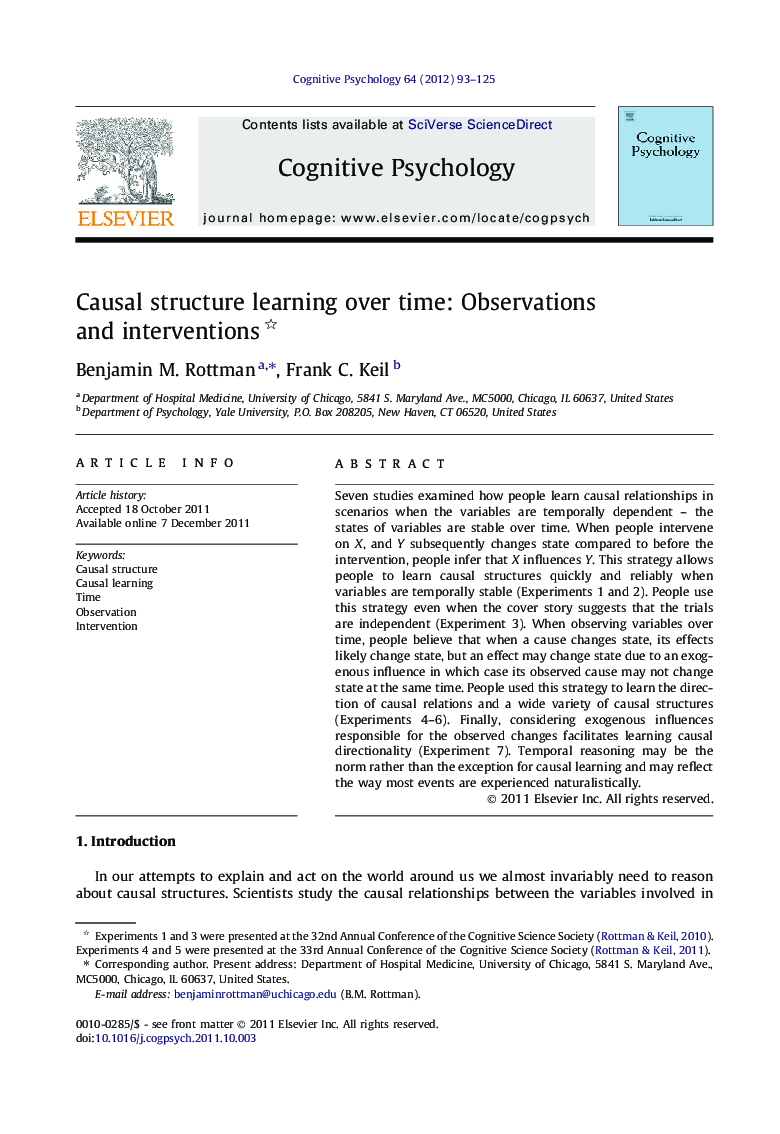| Article ID | Journal | Published Year | Pages | File Type |
|---|---|---|---|---|
| 916911 | Cognitive Psychology | 2012 | 33 Pages |
Seven studies examined how people learn causal relationships in scenarios when the variables are temporally dependent – the states of variables are stable over time. When people intervene on X, and Y subsequently changes state compared to before the intervention, people infer that X influences Y. This strategy allows people to learn causal structures quickly and reliably when variables are temporally stable (Experiments 1 and 2). People use this strategy even when the cover story suggests that the trials are independent (Experiment 3). When observing variables over time, people believe that when a cause changes state, its effects likely change state, but an effect may change state due to an exogenous influence in which case its observed cause may not change state at the same time. People used this strategy to learn the direction of causal relations and a wide variety of causal structures (Experiments 4–6). Finally, considering exogenous influences responsible for the observed changes facilitates learning causal directionality (Experiment 7). Temporal reasoning may be the norm rather than the exception for causal learning and may reflect the way most events are experienced naturalistically.
► We examine how people learn causal relationships from manipulating or observing variables over time. ► When people manipulate X and Y simultaneously changes, people infer that X influences Y. ► When observing variables, people assume that changes in a cause will produce changes in its effects, but not visa versa. ► Temporal causal reasoning is intuitive, robust, and allows people to learn otherwise indiscriminable causal structures.
